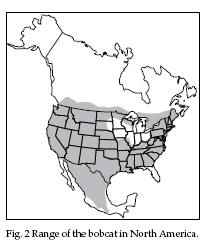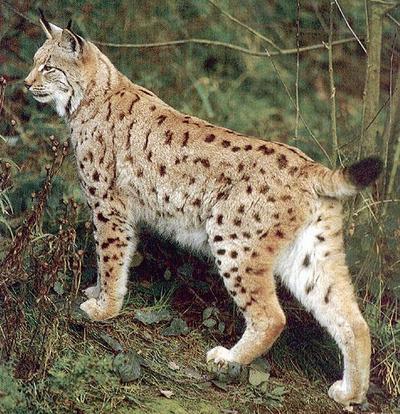The bobcat occurs in a wide variety of habitats from the Atlantic to the Pacific ocean and from Mexico to northern British Columbia (Fig. 2). It occurs in the 48 contiguous states. The bobcat is as adapted to subtropical forests as it is to dense shrub and hardwood cover in temperate climates. Other habitats include chaparral, wooded streams, river bottoms, canyon-lands, and coniferous forests up to 9,000 feet. Bobcats behavioral preferences are for areas where these native habitat types are interspersed with agriculture and escape cover (rocky outcrops) close by. The bobcat has thrived where agriculture is interspersed through the above native habitat types, as in southern Canada.
Bobcats are capable of hunting and killing prey that range from the size of a mouse to that of a deer. Rabbits, tree squirrels, ground squirrels, woodrats, porcupines, pocket gophers, and ground hogs comprise most of their diet. Opossums, raccoon, grouse, wild turkey, and other ground-nesting birds are also eaten. Occasionally, insects and reptiles can be part of the bobcat’s diet. In Canada, the snowshoe hare is the bobcat’s favorite fare. Bobcats occasionally kill livestock and they also resort to scavenging.

